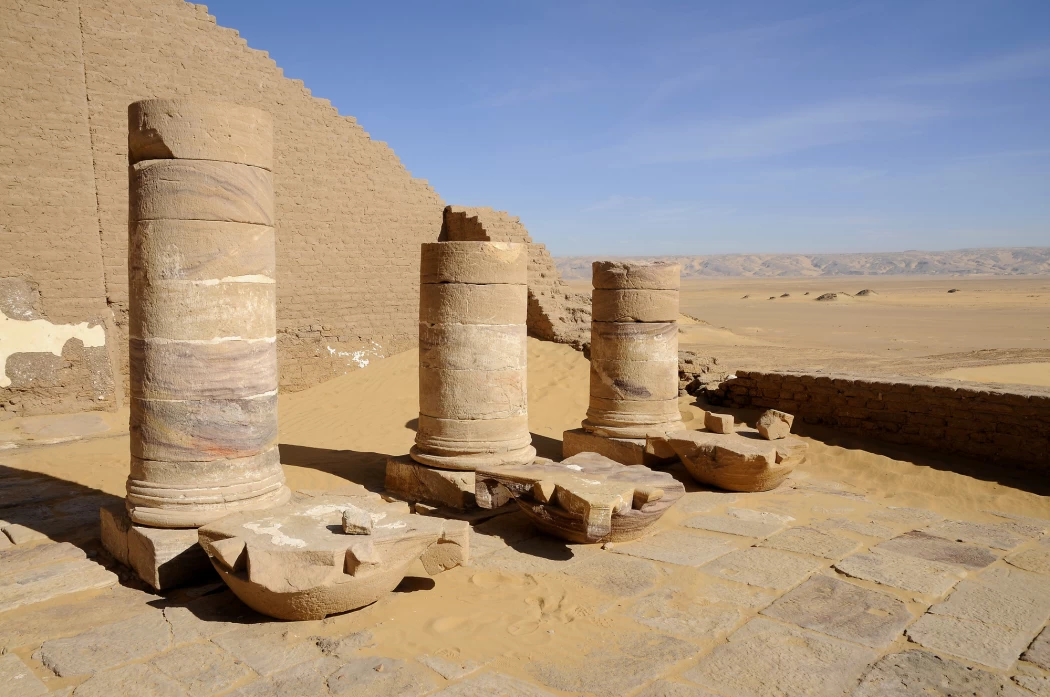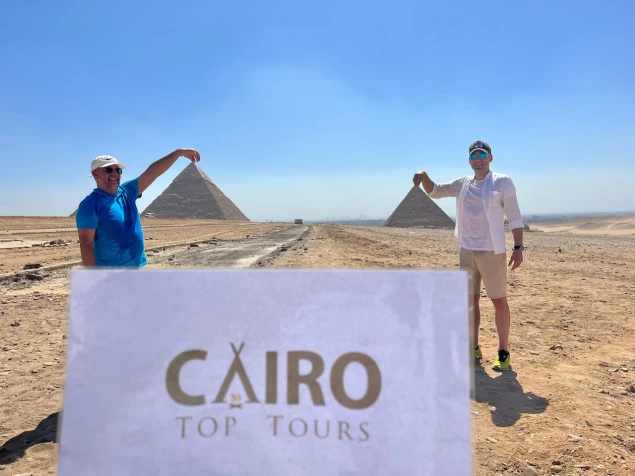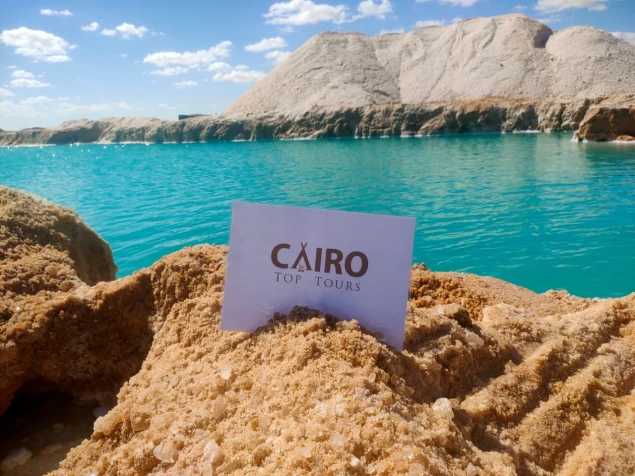
Temple of Dush in Kharga Oasis
The temple is made of limestone, while the ramparts and walls around it are built with adobe bricks. The temple was built in the period of the emperors Domitian, Hadrian, and Trajan.
Location
The temple is located south of the city of Kharga, about 113 km away from it, and the city of Paris is 23 km inside the desert and is located at the junction of the Oasis trail leading to Sudan and the Esna Trail, which connects the center of Paris with the Esna area. This temple was built in 117 AD and is located in the ancient oasis of Dosh, with inscriptions on its walls and an important archaeological area next to it.
the temple's edifice informs us that it was built in 117 AD during the reign of the Roman Emperor Trajan. The temple follows the traditional Egyptian architectural layout, as it consists of an edifice, a courtyard, a sanctuary for the Holy of Holies, as well as some side chambers. One of the most important views has a view on the temple edifice depicting Emperor Hadrian making offerings to some Egyptian idols such as Amun, Maat, ISIS, and others. Views are also engraved on the walls of the Holy of Holies, depicting Emperor
Hadrian worshiping in front of the idols Serapis, ISIS, and Harpocrates
At a distance of 120 kilometers from the city of Kharga, the temple of "dosh" stands as a model of ancient architecture, which was named after the village on whose land it was erected, which is the village of dosh in the city of Paris, where the old village bore several names, the beginning was with the name "kesht", and turned into "jasht", then to "Dasht", from which its current name "dosh" came, and it was once a very prosperous agricultural city.
The wealthy Mohammed Mohsen Jaber told the "gate of the pyramids": the temple is a sandstone building, while the fort, the fence, additional and outbuildings around it are built of adobe bricks, and the temple is dedicated to the" general Trinity " (Osiris - Horus - ISIS), but in their bodies and their Roman attributes known as(sarapis - harpocrates - ISIS).
Jaber adds: the temple is located on one axis, extending from North to South, and the oldest part of it known as the"Holy of Holies" was built during the reign of the Roman Emperor Domitian, and the Emperor Hadrian engraved the inscriptions on the walls of the temple, as well as the halls inside and outside.
He pointed out that the temple contains most of the views of the Egyptian idols, which highlight the emperor's offering various offerings to the temple Lords, as a kind of closeness to the Egyptian idols, and to satisfy the priests and the people of oases and Egypt as a whole, as well as to bring the idols closer to their idols in their country.
He pointed out that the "dosh" temple is similar in its layout and architecture to the temples that were built in ancient Egypt, in terms of the presence of "Gates" and then "halls" that include columns on 3 rows leading to the "Holy of Holies", and at the end of the halls there is a staircase to climb to the top floor, and on the first main gate of the temple there is the founding text from the era of Emperor Trajan, and mentioned the name of the military governor of the region at the time, and the time of construction, an indication of the control of the Romans over the area in ancient times, where the Oasis area was garrisons of the Roman Empire.
Jaber explained that there is another important area near that area, known as the "Ain Manawar" area, with a temple dedicated to the idol "Amun-Ra" and his Trinity, stressing the importance of the area, due to the presence of "Manawar", an important element and source of water and irrigation for agriculture in ancient times, of the greatest importance to the Romans, and one of their most prominent activities in the desert and oases.
It is noteworthy that a permanent mission, the mission of the French Institute of Oriental Antiquities, operates in the region under the supervision of the Ministry of Antiquities. The "treasure of dosh" was discovered in it, and it was transferred to the Egyptian Museum, which is a wreath, bracelets, and a gold necklace, where the expedition workers found it inside one of the rooms in the fort in a pottery vase.














